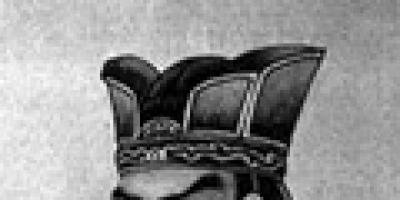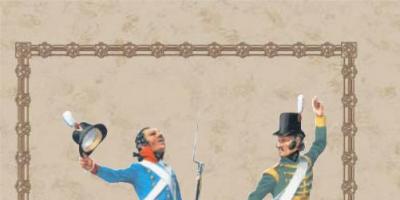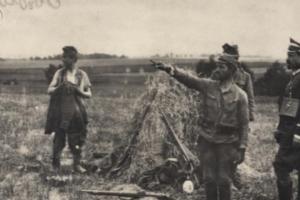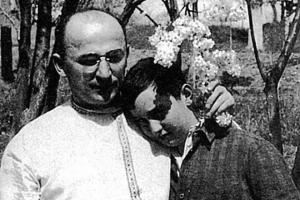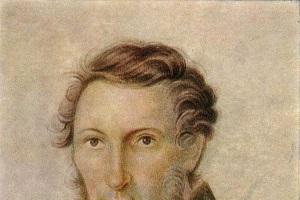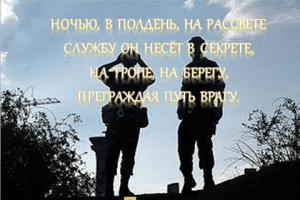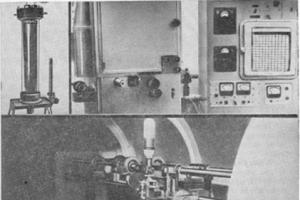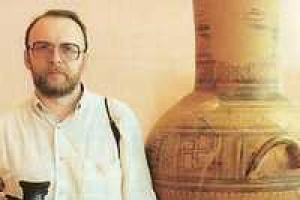| War | Participating countries | Years | A comment |
| War of Independence from Spain | Spain against the rebel colonies: Chile, Peru, New Spain (Mexico, Central America), United Provinces of South America (Argentina, Uruguay, Bolivia), Gran Colombia (Ecuador, Venezuela) | 1810-1825 | The protracted war for independence from Spain was bloody, but most of the colonies gained freedom, except for a number of Caribbean islands (Cuba, Puerto Rico). Spain lost 34.4 thousand people in this colonial war. The rebels lost 570 thousand people from all causes, including 320 thousand in South America and 250 thousand in North America. |
| War against the Equatorial Confederation | Brazil | 1824 | War with a separatist entity in the northeast of the country. The Confederation was defeated by Brazilian troops under the command of British Rear Admiral Thomas Cochrane and ceased to exist a few months after its proclamation. |
| Argentina | 1828-1829 | The struggle between Unitarians and Federalists. Bolivia and Uruguay separated from Argentina with the participation of their neighbors. | |
| Civil War in Chile | Chile | 1829 | The war between conservatives and liberals, which ended in victory for the latter. |
| Desert Campaign | Argentina | 1833 | War against the Patagonian Indians in southern Argentina. It took the form of a raid during which 3,200 Indians died. |
| Sporadic uprisings in Mexico | Mexico | 1827-1855 | Permanent struggle for power and uprisings in the provinces. Mexico, with the participation of the United States, lost half of its territory. |
| Uprisings in the regions | Brazil | 1831-1840 | Republican uprisings in the provinces against the emperor. |
| War Farrapus | Brazil | 1835-1845 | Republican uprising in the south of the Brazilian Empire. The rebels proclaimed several republics in the provinces affected by the uprising, but were defeated by government troops. 20 thousand people died in the war. |
| Great War | Uruguay, Brazil, Argentina, UK, France | 1838-1851 | The war of the new Uruguayan President Oribe against the old President Rivera, both sides were supported from the outside. At least 10 thousand people died. |
| War with Rosas | Argentina, Uruguay, Brazil | 1838-1851 | The war of President Juan Manuel de Rosas with the rebel provinces of Corrientes and Entre Rios, who were helped by Uruguay and Brazil. Rosas lost and fled the country. Up to 35 thousand people died in the war. |
| War of the Supremes | New Granada (Colombia) | 1839-1842 | The war between the central government and the regional barons - the High Ones. The government won. At least four thousand people died in the war. |
| Civil War in Ecuador | Ecuador | 1845-1860 | War of liberals and conservatives. In 15 years, there have been five presidents and two juntas. |
| Caste War | Mexico | 1847-1855 | War with the Mayans on the Yucatan Peninsula. The Mayans fought back, creating their own autonomy. The war was accompanied by genocide and claimed 300 thousand lives. |
| Civil War in Colombia | Colombia | 1851 | |
| Civil War in Chile | Chile | 1851 | War of liberals and conservatives. |
| Civil War in Peru | Peru | 1853-1855 | War of liberals and conservatives. |
| Civil War in Colombia | Colombia | 1854 | Movement in Panama, which was then part of Colombia. Under US pressure, Colombia granted autonomy to Panama. |
| Civil War in Peru | Peru | 1856-1858 | War of liberals and conservatives. |
| Reformist war | Mexico | 1858-1861 | The war of liberals and conservatives and feudal lords, in which the former won. 51 thousand people died in the war. |
| Civil War in Colombia | Colombia | 1859-186 2 | War of liberals and conservatives. 19 thousand people died in the war. |
| Federal War | Venezuela | 1859-1863 | War of liberals and conservatives. 100 thousand people died in the war, including up to 50 thousand in battles. |
| Civil War in Argentina | Argentina | 1863 | The struggle between Unitarians and Federalists. |
| Civil War in Ecuador | Ecuador | 1863 | War of liberals and conservatives. |
| Civil War in Argentina | Argentina | 1866-1867 | War of liberals and conservatives. |
| Civil War in Peru | Peru | 1866-1868 | War of liberals and conservatives. |
| Civil War in Venezuela | Venezuela | 1868-1871 | War of liberals and conservatives. |
| War with the Mapuche | Chile | 1868-188 1 | War with the Mapuche Indians. Conquest of Chile by the Araucan Indians. |
| Civil War in Argentina | Argentina | 1870 -1871 | War of liberals and conservatives. |
| Civil War in Uruguay | Uruguay | 1870 -1875 | War of liberals and conservatives. |
| Civil War in Argentina | Argentina | 1874 | Revolt of the province of Entre Rios. |
| Civil War in Colombia | Colombia | 1876 -1877 | Conservative revolt. |
| Conquest of the Desert | Argentina | 1880 | War with the Indians of Patagonia. Conquest of Patagonia. |
| Indian campaigns | Mexico | 1880-1900 | Conquest of Yucatan, war with the Mayans. |
| Civil War in Colombia | Colombia | 1884-1885 | War of liberals and conservatives. |
| Civil War in Chile | Chile | 1891 | The war was between President Balmaceda, who was supported by the army, and the parliament, which was supported by the navy. The president lost and committed suicide, a parliamentary republic was established. Five thousand people died. |
| War with the state of Rio Grande do Sul | Brazil | 1893-1894 | Fight against separatists. |
| Civil War in Peru | Peru | 1894-1895 | War of liberals and conservatives. |
| Civil War in Ecuador | Ecuador | 1895 | War of liberals and conservatives. |
| War with the State of Bahia | Brazil | 1896-1897 | Fight against separatists. |
| Civil War in Venezuela | Venezuela | 1898-1900 | War of liberals and conservatives. |
| War of a Thousand Days | Colombia | 1899-1903 | War of liberals and conservatives. The Conservatives won. 100 thousand people died. |
| Panama Branch | Panama, Colombia, USA | 1903 | Panama separated from Colombia with US help. Ten thousand people died. |
| Civil War in Uruguay | Uruguay | 1904 | War of liberals and conservatives. |
| Mexican Revolution | Mexico, USA | 1910-1920 | The fight against the Diaz dictatorship grew into a war between moderate and radical revolutionaries. The revolution was accompanied by US interventions. At least 175 thousand people died. |
| Civil War in Ecuador | Ecuador | 1911-1912 | Peasant war against the government. |
| Civil War in Paraguay | Paraguay | 1911-1912 | During the years 1904-1912, 10 presidents changed in Paraguay, and there were six coups. |
| Civil War in Ecuador | Ecuador | 1922-1925 | Peasant revolts. |
| Civil War in Honduras | Honduras, USA | 1924 | Popular uprising in connection with elections. Suppressed with the help of American troops. |
| Rise of the Cristeros | Mexico | 1926-1930 | Peasant war against the government. A quarter of a million people died, including 86 thousand in battle. |
| War of La Matanza | Salvador | 1932 | An uprising of peasants and communists, brutally suppressed by the government. 30 thousand people died. |
| Civil War in Paraguay | Paraguay | 1947 | A coalition of the political left led by Colonel Rafael Franco rebelled against dictator General Higuinio Morinigo in March 1947, but was defeated after six months of struggle in August 1947. Two and a half thousand people died. |
| Civil War in Costa Rica | Costa Rica | 194 8 | After the annulment of the election results in March 1948, a war broke out between the winner of the elections, Otilio Ulate, and Rafael Calderon, who remained in power. Despite the help of Nicaragua and Honduras, Calderon lost. The commander of the pro-Ulate forces, Colonel José Figueres Ferrer, seized power in May 1948 and installed a junta. Two thousand people died. |
| War of La Violencia | Colombia | 1948-1962 | The war between conservatives and liberals began after the assassination of popular liberal Jorge Eliecer Gaitan in April 1948, riots broke out in Bogotá, killing two thousand people within three days. It was not until 1957 that an agreement on elections was reached. In August 1958, liberal Lleras Camargo was elected president of Colombia. 300 thousand people died in the war. |
| Bolivian revolution | Bolivia | 1952 | The National Revolutionary Movement of the Left overthrew the military junta in April 1952. This was followed by important reforms in the country. A thousand people died. |
| War against Arbenz | Guatemala, USA | 1954 | The overthrow of leftist President Jacobo Arbenz Gumana, organized by the United States. A thousand people died. |
| Overthrow of Peron | Argentina | 1955 | After ten years of corruption and economic problems, dictator Juan Peron was overthrown by the military in September 1955, within three days. Peron fled to Paraguay and then to Spain. Two thousand people died. |
| Cuban Revolution | Cuba | 1957 -1959 | In November 1956, Fidel Castro's detachment from Mexico landed in Cuba and began fighting the regime of Fulgencio Batista. The detachment was initially defeated, but Castro fled to the Cerro Maestro mountains. Over the course of two years, the partisans strengthened their power and expanded their territory. At the end of 1958, the rebels entered Havana. Batista fled the country in January 1959. Five thousand people died in the revolution. |
| Civil War in the Dominican Republic | Dominican Republic | 1965 | In 1963, a coup overthrew leftist President Juan Bosch. In April 1965, Bosch supporters overthrew the opposing government. The civil war began. To prevent the left from taking power, the United States landed 20 thousand soldiers and transferred power to the military junta in May 1965. After the junta attacked the rebel positions, the war continued until June 1966, when the centrists came to power as a result of elections. US and Organization of American States troops withdrew. Three thousand people died in the war. |
| Guatemala | 1966-1972 | The Guatemalan Civil War began in November 1960 with an army uprising against the government of General Miguel Fuentes. The uprising was easily suppressed with the help of the United States, but some officers created the left-wing Rebel Armed Forces. The war escalated in 1966 when repression by the army and death squads fell on the Indians of Guatemala. After 36 years of war, the Guatemalan National Liberation Bloc reached an agreement with President Alvaro Arzu on the terms of radical reforms. The war claimed 150 thousand lives. | |
| Civil War in Guatemala | Guatemala | 1978-1984 | |
| Nicaraguan Revolution | Nicaragua | 1978-1979 | In January 1978, Nicaraguan dictator Somoza ordered the assassination of opposition leader Pedro Joaquín Chamorra. In response, the Sandinista communist rebels stormed the government building in August 1978. The Sandinistas occupied the south of the country and by July 1979 surrounded the capital, Managua, soon taking power. |
| Civil War in El Salvador | Salvador | 1979-1992 | In October 1979, officers overthrew the dictator of El Salvador and installed a military junta. Communist detachments acted against the junta. El Salvador received assistance from the United States, and the rebels received assistance from Cuba, Nicaragua and the USSR. After thirteen years of war, peace was concluded, according to which the partisans joined the government army. 62 thousand people died in the war. |
| War with the Contras | Nicaragua, USA | 1982-1990 | The Sandinistas came to power and now right-wing militants - the Contras - acted against them, with the support of the United States. In February 1990, a peace agreement was concluded and elections were held in which Violeta Barrios de Chamorro won. 60 thousand people died in the war. |
| Movement of the Bright Path | Peru | 1982-1992 | In May 1980, militants from the Maoist Shining Path movement began a war with the Peruvian government by attacking a polling station during elections. Only the arrests of the leaders of the movement: Guzman in 1992 and Oscar Ramirez Duran in 1999, brought the war, in which 30 thousand people died, to nothing. |
| Civil War in Colombia | Colombia | 1984 - ongoing | The most intense period of action for the Revolutionary Armed Forces of Colombia, a left-wing party that fights the government and controls the south of the country. 200 thousand people died in the war, including 40 thousand in battle. |
| Total: 65 wars in 200 years | 10 - Colombia, 9 - Argentina, 6 - Mexico, 5 - Brazil, Peru and Ecuador, 4 - Chile, 3 - Venezuela, Guatemala and Uruguay, 2 - Nicaragua, Paraguay and El Salvador, 1 - Bolivia, Honduras, Dominican Republic, Cuba , Costa Rica (War of Independence from Spain does not count) | 24 wars between liberals and conservatives, 12 wars with separatists, 6 wars for power between contenders, 6 communist uprisings and movements, 5 wars with Indians, 4 peasant wars, 3 revolutions, 3 putschs, 1 anti-communist movement (the war of independence from Spain is not taken into account ). In total, according to incomplete data, 2,535,100 people died, including at least half a million Indians (but including the war of independence with Spain). |
The list contains several significant events, for example, the overthrow of Allende in 1973, which killed up to five thousand people, but overall it gives an idea of the nature of the political development of Latin American countries. The existence of the War of Independence against Spain is somewhat surprising, but it was partially civil in nature, as often happens in such cases. IN XIX century, internal wars took the form of a struggle between the bourgeoisie (liberals) and the feudal nobility (conservatives), there was a serious problem of separatism and the preservation of the state (most of the countries of Central America, for example, were simply breakaway provinces). IN XX century, social revolutions and the struggle of the left to overcome wealth inequality came to the fore. Communist guerrilla movements still represent the main content of wars in the Western Hemisphere. Naturally, over the last hundred years, the United States has been particularly active in intervening in Latin American wars. We can conclude that Latin America lost twice as many people in internal wars as in external ones. It must be said that, for example, for Africa this ratio is much more inclined towards internal wars, since genocides and tribal strife are frequent on the Dark Continent, while in Latin America social strife has always played a large role, and wars with the Indians were a peripheral phenomenon .
According to the Treaty of Versailles, which ended the First World War, signed on June 28, 1919, Germany pledged to seriously limit both the number of troops and the quality of weapons. It is not surprising that the Chaca War of 1932-1935 between Bolivia and Paraguay became a rehearsal for the Second World War. The Bolivian army was many times larger than the Paraguayan army. It was armed with the latest technology - war loans for Bolivia were allocated by the United States. In addition, German officers commanded the Bolivian army. The services of which were generously paid for in the same American dollars.
It would seem that the defeat of little Paraguay was a foregone conclusion... However, Russian officers stood at the head of the Paraguayan army. Russian ingenuity, high fighting spirit and Suvorov’s “science of winning” helped Paraguay defeat superior enemy forces.
“This war is indeed considered the bloodiest in South America. At the helm of the leadership of the armed forces of the warring parties (Bolivia and Paraguay) were German and Russian officers, respectively. The Russian corps was commanded General Belyaev.
Forward to Paraguay
The triumphant offensive of the Red Army, which ousted Wrangel’s troops from the Crimea, ended with the sudden departure of the latter to the Turkish and other shores. One of the countries that wished to accept Russian refugees was Paraguay, where white emigrants settled in the early 1920s. The leadership of this South American state was well aware of the fact that it was receiving representatives of the Russian military school - one of the best in the world. Yes, Major General Ivan Timofeevich Belyaev, who was part of the Russian diaspora, was invited to head the military academy in the capital, Asunción. And a couple of years later, another Russian general, who arrived in this Latin American country, became a professor at the academy - Nikolai Frantsevich Ern, who later became a lieutenant general in the Paraguayan Army, and at that time a representative of the ROWS (Russian All-Military Union). In 1924, the Paraguayan Ministry of Defense sent Ivan Timofeevich Belyaev for scientific, topographical, cultural, ethnographic and other research to the Chaco-Boreal region, located between the Pilcomayo and Paraguay rivers.
In the photo: Ivan Timofeevich Belyaev/ Photo: wikimedia
And although this area was claimed by two states at once, one of which was Bolivia, de facto the country of the legendary revolutionary considered this area its patrimony, sending its troops there at the beginning of the twentieth century and building several powerful fortresses. It should be noted that its population was almost three times larger than that of Paraguay. In addition, Bolivia was much richer than its neighbor and had a stronger and more numerous army. If Paraguay did not have tanks, and its air force had only seventeen aircraft, then the armed forces of Bolivia consisted of several tanks, including light tankettes, as well as 60 winged vehicles. And the Paraguayan army itself had at its disposal only three thousand bayonets (including about 80 Russian officers) against thousands of Bolivian police units, its regular troops and self-defense forces, commanded by 120 German officers.
That is why, out of fear that Bolivia would seriously gain a foothold in these disputed territories, more than a dozen expeditions were organized. And Ivan Timofeevich Belyaev coped with his task perfectly, drawing up detailed maps of the area. He also became thoroughly acquainted with the languages of the Indians, their customs, beliefs, rituals, culture and daily life. However, the decisive role in the upcoming inevitable conflict between the two Latin American countries was played not by cultural, but by geological exploration.
Oil as a prize for the winner
This happened soon after the relatively peaceful scientific, ethnographic and topographical research of General Belyaev was interrupted by unexpected news: gigantic oil reserves were discovered in the disputed territory. Bolivia, which essentially controlled the area, immediately entered into an agreement with the American oil company Standard Oil. Not wanting to miss out on its piece of the oil pie, Paraguay also tried to stake out oil-bearing territories for itself and turned to the Dutch-British company Royal Dutch Shell for help in further exploration and production of black gold. And then the military confrontation began.
The test of strength took place in the summer of 1928, when the Paraguayan cavalry attacked formations of the Bolivian self-defense forces. At first the battles went on with varying degrees of success. Thus, the Paraguayan military, who took the Vanguardia fortress, razed it to the ground. The Bolivians did not remain in debt and left no stone unturned from the Paraguayan fort of Boqueron. However, military attacks on both sides were soon stopped by the decision of the League of Nations, which was concerned about the escalation of the conflict. However, as has increasingly happened lately, the “most peace-loving country” - the United States of America (as the United States was called until the mid-twentieth century) - intervened in the negotiations. Protecting the interests of their business (Standard Oil), the Americans did everything possible to ensure that the war continued. Thus, at their instigation, the Bolivian government put forward conditions during the negotiations that Paraguay simply could not agree to fulfill. In turn, Bolivar’s ancestors, convinced by the Americans, were fully confident that if the conflict continued further, their victory was guaranteed. In short, after some time the fighting was resumed with renewed vigor. And success at first, indeed, was on the side of the Bolivians.
In mid-1932, they attacked several Paraguayan forts at once, capturing some of them, including Corrales and Carlos Antonio Lopez (in the city of Pitiantuta). The Paraguayans soon recaptured their fortresses and immediately announced general mobilization, which allowed them to increase the number of bayonets in their army to several tens of thousands. However, under the leadership of German officers, the Bolivians skillfully used military equipment, including airplanes. However, the Paraguayans very quickly learned to shoot them down. At the same time, they purchased five Italian Fiat CR 20bis fighters. But this was nothing compared to the Bolivian Air Force, which supplemented its fleet with an additional nine Curtis 35A fighters and twenty Curtis-Wright bombers.
And again like in the First World War
To achieve at least some parity in armed clashes, Colonel Jose Felix Estigarribia, who commanded the Paraguayan army, had to appoint Ivan Timofeevich Belyaev as chief of the general staff. Also, Russian officers were appointed to all key army posts, occupying the positions of regiment commanders, battalion commanders, and chiefs of staff of Paraguayan formations, one of them even commanded a division.
In the photo: soldiers fighting from the Bolivian side in front of their tanks / Scherl / Globallookpress
In turn, by order of the Bolivian President Daniel Domingo Salamanca Urea, in 1932, a German general was appointed commander of the Bolivian army Hans Kundt, an old acquaintance of the Russian military from the fields of the First World War. Having been a military adviser to the Bolivian General Staff since 1911, Kundt was recalled to the Eastern Front at the outbreak of war. But after participating in the so-called Kapp Putsch in 1920, he was forced to flee to Bolivia again along with a group of like-minded people. He, like Belyaev, had at his disposal sufficiently proven officers with experience in battles against the Russian army. However, the theater of operations in Latin America was very different from that in Europe. And soon it became obvious.
Believing that the main thing was to cut off the advancing enemy units from the rear, Hans Kundt ordered the Bolivian troops to move to the city of Concepcion, on the Paraguay River. However, for this it was necessary to first take Fort Nanava, defended by the wards of General Belyaev. Ivan Timofeevich studied the tactics of the German General Staff very well and took appropriate measures to defend the fortress, entrusting it to General Nikolai Ern. Therefore, after many months of siege and attacks, the Bolivians failed to do this. Ultimately, by the end of 1933, the commander-in-chief of the Bolivian army was dismissed. The enemy, on the contrary, soon found himself surrounded: his 9th and 4th divisions were blocked by the Paraguayans.
This confrontation lasted for almost seven years (with some interruptions). And the parties exhausted each other so much that they were forced to stop fighting and conclude a truce through the mediation of Argentina in mid-1935. However, all Bolivia achieved in this war was a narrow corridor to the Paraguay River, which allowed it to eventually build a port and open shipping. But, thanks to the “leading and directing” Russian military school and the efforts of the officer corps of the tsarist army, three-quarters of the disputed territory of Chaco-Boreal was transferred to Paraguay as an annexation. It is noteworthy that oil itself was discovered in this area only... two years ago.
Despite everything, Ivan Timofeevich Belyaev is still considered a national hero in Paraguay, thanks to whom the country won that unknown war. The Russian general was buried in 1957 in the capital of Paraguay, Asuncion, with the highest military honors.”
Photo at the opening of the article: Paraguayan troops, 1932/ Photo: wikipedia
Other materials on the topic of the feat of the Russians in Paraguay.
coat of arms The distinctive features of the officer's costume were epaulettes, gold braid trim on the chest and black hussar boots.
268. NETHERLANDS. Belgian Militia, Infantry Lieutenant. 1815
The Belgian line infantry differed from the Dutch in that it had shakos similar to the British model of 1812, and the Dutch regiments wore shakos with a visor and a backplate. On top of the visor was an image of the sun with the royal initials. The Belgian militia were equipped with the same shako as their infantry, but it is most likely that only officers wore them in 1815. The uniforms of the Belgian line regiments had a white collar and cuffs.
Wars in South America. 1810-1826
The unrest experienced by Spain and Portugal during the Napoleonic Wars led to an explosion of discontent in their South American colonies, where unrest developed into long wars of independence. As a result of these wars, all Spanish colonies won political independence and formed independent states.
269. ARGENTINA. Infantry Regiment "Patricios", private. 1807
During the colonial era, in addition to regular regiments in the Spanish possessions in South America, there were military units of militias. This regiment was formed to fight against the British occupation in 1806 during the Argentine War of Independence (1810-1816)

this regiment went over to the side of the liberation movement and became the core of the new national army, the uniform of which was made according to the uniforms of the armies of European countries. Most soldiers in the Argentine armed forces wore a round cap.
270. ARGENTINA. Cavalry Regiment "Hell", private. 1807
Formed in 1806 to fight against the British army. Subsequently, this regiment, like the Patriotic Regiment (269), went over to the side of the liberation movement. The regiment's uniform resembles that of the Argentine foot rangers. Other cavalry units had blue uniforms with red collars and cuffs. In addition, the uniforms were decorated with braided cords on the chest and had the same trim on the trousers. However, most of the Argentine cavalry did not have a specific uniform and wore the national gaucho costume. In the hands of the cavalryman shown in the picture is a cockade, which in 1812 replaced the red Spanish cockade on the headdresses of Argentine soldiers.
271. BRAZIL. Rio de Janeiro Militia Infantry, private. 1822
Since 1808, the Brazilian military uniform, like the Portuguese, was influenced by the British military uniform. The dominant colors of Brazilian uniforms were green and yellow, and from 1822 to 1825, Brazilian military personnel wore a green cockade on the left sleeve of the uniform above a yellow chevron with the inscription “Freedom or Death.”

272. BRAZIL. Diamantina Civil Guard, private. 1824
The European fashion of military clothing also reached the shores of South America. First of all, it was revealed in the use of shakos of the post-Napoleonic period. During the hot season, Brazilian soldiers wore white uniforms made of linen.
273. MEXICO. Rebel Army, officer. 1814
Until 1820, since the War of Mexican Independence from Spain (1810-1824) was ongoing, it was impossible to introduce a uniform military uniform in the army. Nevertheless, some military units had distinctive insignia: most often these were cardboard of a certain color or design, attached to caps.
274. MEXICO. Liberation Army, light cavalry private. 1810
After Colonel A. Iturbide, who had fought against the rebels since 1810, went over to their side in 1820, the army’s equipment improved significantly: the infantry was completely dressed in blue uniforms. However, some rebels still continued to wear red uniforms (291-292).
275. VENEZUELA. Bolivar's Guard, cavalryman. 1820
The uniform of the personal guard of S. Bolivar, the most popular leader of the struggle for the independence of Latin America, in some details resembled the uniform of horse huntsmen of the Napoleonic period. The colors of the uniform - red, yellow and blue - corresponded to the national colors of Venezuela. The rest of the Venezuelan
This lesson will focus on the struggle for independence of Latin American countries. The countries of Latin America were colonies of Spain and Portugal, but they had before their eyes the example of the United States of America, which achieved independence and independence from the European metropolis - England. Whether Latin American countries will also be able to achieve independence and how this will happen, you will learn by studying this lesson.

Rice. 2. Monument to Francisco de Miranda in Russia ()
Miranda's ideas were influenced by the experience of the United States of America. These territories managed to become independent from Europe, which means that the inhabitants of South America could well have achieved this.
However, North America had a different economic situation. North America was self-sufficient, and it was impossible for the Latin American colonies to do without connections with Europe.
The first attempt to rebel and free ourselves from European colonial rule was made not by Spanish or Portuguese colonists, but by residents of the French colony Haiti. In 1789, a revolution began in France, and on the island of Haiti this news was greeted with jubilation. Haiti had a unique situation regarding the ethnic composition of the country. In addition to black slaves, who were imported from Africa in huge numbers, there was a small group in Haiti mulattoes, that is, people who were descendants of mixed marriages of Europeans and Africans. Mulattoes became the striking force that staged the revolution in Haiti. At that time, about half a million black slaves lived in Haiti, and there were only about 40 thousand Europeans. In 1791, the first uprising took place in Haiti under the slogans of equality, justice and independence.. This uprising was led by a mulatto planter Vincent Auger(Fig. 3). The uprising he raised was crushed, and Vincent Auger himself was executed. But this did not mean that the revolution in Haiti was over. The uprising was now led Dominique Toussaint Louverture(Fig. 4). He created combat-ready units that began to fight the French colonialists and demand freedom and independence. Spain decided to take advantage of this, which could not forgive France for the fact that at the end of the 17th century, Haiti came under French control. As a result, France decided that it would be better to come to an agreement with the rebels than to suppress these protests. In 1793, France officially freed all slaves.

Rice. 3. Vincent Auger ()

Rice. 4. Dominique Toussaint Louverture ()
As a result of the war that went on between France and Spain in Haiti, the French relied on former slaves. Serious fighting units were formed, which by 1798 drove out all non-French people from Haitian territory. These detachments had a clear system of military discipline, and Toussaint Louverture was appointed general, and he subsequently became the ruler of the entire island under the rank of consul.
After Napoleon came to power, the French changed their minds about giving freedom to black slaves. In 1802 it was announced that slavery would be restored in Haiti. A new uprising broke out in Haiti; a general's army was sent to suppress this uprising. Leclerc. He managed to cope with the main forces of the rebels. But suppressing the entire uprising would take too long, and Leclerc’s troops were greatly needed in Europe. The general resorted to a trick: Toussaint Louverture was persuaded to sign a truce on the terms of the French refusal to restore slavery. After the truce was signed, the French resorted to another trick: under the pretext that another uprising was being prepared in Haiti, they lured Toussaint Louverture into a trap and captured him. The general was transported to French territory, imprisoned, where he died of tuberculosis.
The result of this uprising was the declaration of independence of the island. On January 1, 1804, Haiti was declared an independent state. It did not remain a republic for long. Very quickly, an imperial political system was established in Haiti. The French did not recognize Haiti's independence for a long time. They agreed to do this only in 1834, after the Haitians decided to pay compensation to France for property lost on the island.
The example of Haiti inspired other Latin American colonies. As a result, in 1808 Miranda attempted to raise a rebellion in Latin America, but this rebellion was quickly suppressed. In 1808, France went to war with Spain in Europe. The weakened metropolis could no longer fight its opponents as actively as it had at the end of the 18th and beginning of the 19th centuries.
The struggle for independence of this region can be divided into two stages.
- 1810-1815 - isolated uprisings, uncoordinated actions of liberation forces. The uprisings were suppressed.
During this period, uprisings took place in Venezuela, led by Miranda and Simon Bolivar(Fig. 5). Similar uprisings broke out in modern-day Argentina and Chile. Spanish troops in Latin America managed to quickly go on the offensive and suppress most of the uprisings. In 1812, the army operating in Venezuela under the command of Miranda capitulated. Miranda was arrested by his own supporters for cowardice and treason and handed over to the Spaniards. Bolivar managed to escape. He moved to Jamaica, which was a British colony at the time, and established contact with the Haitian authorities. The Haitians sent him weapons and ammunition. The result of this chain of uprisings in 1810-1811. became independent Paraguay, proclaimed in 1811, as well as the independence of the territory La Plata(northern and central part of modern Argentina). In all other regions, by 1816 the Spaniards managed to suppress the protests of supporters of independence.

Rice. 5. Simon Bolivar ()
- 1816-1826 - actions of the united armies; declaration of independence of seven states in the region.
This stage is distinguished by the coordination of the troops' actions. The main role in the liberation of Latin America was played by the armies of Bolivar and San Martin(Fig. 6).

Rice. 6. San Martin ()
Creole General San Martin in 1816 created a combat-ready army in the province of La Plata. In 1818, the independence of the Chilean state was proclaimed. San Martin's troops then marched north. After numerous battles with the Spaniards Peruvian independence was declared in 1821. At that time, the army of Simon Bolivar was operating in northern South America. In 1816, he managed to launch full-scale military operations on the territory of Venezuela, and in In 1819 he liberated the territory of modern Colombia. As a result, a single state was created, which was called Gran Colombia. In 1822, Bolivar's troops launched an offensive into Ecuador, and in the same year there was independence of Ecuador declared.
Supporters of the idea of complete liberation of Latin America from Spanish rule hoped for cooperation between Bolivar and San Martin. In 1822, they met in the city of Guayaquil.(Fig. 7). However, it turned out that there were serious differences between the two commanders-in-chief. Bolivar refused to help San Martin with troops, because he still needed to liberate the territory of upper Peru (modern Bolivia). San Martín abandoned his position as commander-in-chief in Peru and went to Europe, where he died 30 years later. Simon Bolivar formed another army, with which in 1824-1825. completed the work of San Martin and liberated the territory of Upper Peru. The state proclaimed there in 1825 received the name Bolivia in his honor.

Rice. 7. Meeting of Simon Bolivar and San Martin in 1822 ()
In 1810, the revolution began in Mexico. The first revolutionary army was formed by a priest Miguel Hidalgo(Fig. 8). It operated for a short time (from 1810 to 1811). In 1811 it was replaced by another army, led by a priest Jose Maria Morelos. The war of liberation continued until 1815, and as a result the protests were suppressed by the Spaniards.

Rice. 8. Miguel Hidalgo ()
A few years later, another liberation army arose in Mexico. It was led by a former Creole colonel of the Spanish army Agustin de Iturbide(Fig. 9). By the fall of 1821, he managed to expel Spanish troops from Mexico and proclaim an independent state there. Iturbide did not remain the ruler of Mexico for long. In 1822, he proclaimed Mexico an empire and himself emperor. Supporters of the idea of independence did not like the fact that the republic, which they had hoped for for so long, suddenly became a monarchy. Iturbide was expelled from the country. However, he tried to fight for power and returned in 1824, again trying to become Emperor Agustin I. But he was caught and shot.

Rice. 9. Agustin de Iturbide ()
There remained one more territory, still not liberated from European colonial rule. It was a Portuguese colony Brazil. There were two important features here. First, like Haiti, Brazil had a huge percentage of its population made up of African slaves. The Brazilians' struggle for independence from Portugal was further complicated by the fact that the Portuguese court had been located on Brazilian territory since 1807. The Portuguese king and regent decided to flee here to escape Napoleon's approaching armies. That is why it was very difficult to fight the Portuguese king, because he was located on the territory of the colony itself. Brazil was declared a separate state in 1815, and the Portuguese regent Ruan became Emperor RuanVI(Fig. 10). But after the bourgeois revolution took place in Portugal, the king was called to return to his homeland. This is what he did in 1821. The Brazilians were left without a ruler. They decided to take advantage of this to declare complete and final independence from the Portuguese monarchy. In September 1822, Brazilian independence was declared. A month later, the son of the Portuguese king was offered the imperial crown. He became Emperor of Brazil under the name PedroI(Fig. 11).


The proximity of Uruguay's territory to Brazil determined its fate. During the War of Independence, this territory was occupied by Brazilian troops. The Uruguayans rebelled against the Spanish and Brazilians at the same time. In 1825-1828. Military operations took place on the territory of Uruguay. When they finished and Uruguay's independence was declared in 1828, the Latin American wars of independence are over.
As a result of all the listed military actions, 9 states were formed in Latin America, on the site of the former Spanish and Portuguese colonies: United Provinces of Central America, including Guatemala, El Salvador, Nicaragua and Costa Rica, Mexico, Gran Colombia, which now includes Colombia, Venezuela, Panama and Ecuador, Peru, Bolivia, Paraguay Uruguay, Chile and Argentina, which until 1853 was called the United Provinces of La Plata. Brazil was added to them, becoming an independent state and freed from Portuguese colonial rule.
The declared independent Latin American states dreamed of living a new free life and cooperating with all countries on equal terms. But that was not the case. From an economic point of view, all these states were quite weak. In the second half of the 19th century, they had to solve numerous political and economic problems.
Homework
- Which Latin American country was the first to achieve independence? Tell us how it happened.
- What stages can the liberation movement in South America be divided into? How are these stages characterized?
- Tell us about the declaration of independence in Brazil and Uruguay.
- List 9 countries that freed themselves from the colonial oppression of Spain and Portugal in the 19th century.
- Website Historichka.ru ()
- Website Megabook.ru ()
- Website Studopedia.ru ()
- Website Indiansworld.org ()
- Alperovich M.S. War of Independence in Latin America (1810-1826). M., 1964.
- Alperovich M.S. Spanish America in the struggle for independence. M., 1971.
- Alperovich M.S. The birth of the Mexican state. M.: Nauka, 1979.
- Alperovich M.S., Slezkin L.Yu. New history of Latin American countries. M.: Higher School, 1970.
- Lynch J. Revolutions in Spanish America. 1808-1826. M., 1979.
- Noskov V.V., Andreevskaya T.P. General history. 8th grade, M., 2013.
- Yudovskaya A.Ya. General history. Modern history, 1800-1900. 8th grade. M., 2012.
Background
By the middle of the 17th century, all of South (Latin) America was colonized by Europeans. Brazil belonged to the Portuguese, the rest of Latin America was Spanish.
During the XVI-XVIII centuries. Anti-Spanish uprisings periodically broke out in different parts of Latin America. This was due to the policies pursued by Spain in the colonies. All senior positions in the colonies were occupied by Spaniards or Creoles (descendants of Europeans born in the colonies). The local population was subjected to oppression. The economy of the colonies was completely subordinated to the interests of the metropolis (the colonies supplied Spain with precious metals, as well as agricultural products such as tobacco, coffee, maize, and sugar cane).
Events
1808- The army of the French Emperor Napoleon invaded Spain. Latin American patriots took advantage of the weakening of Spain.
1810-1826- War of Independence of the Spanish Colonies. The liberation movement was led by the Patriotic Society. Simon Bolivar and Francisco Miranda played a major role in the movement.
April 1810- uprising in Caracas (Venezuela).
1811- Venezuela's independence was declared.
1819- as a result of the unification of Venezuela and the province of New Granada, a new state arose - Gran Colombia.
1820- Brazil declared independence and declared itself an empire.
1821- Mexico gained independence. In 1824, a republican system was established in Mexico.
1826- the final liberation of Latin America (only Cuba and Puerto Rico remained Spanish).
1868- uprising in Cuba.
1895- An independent Cuban Republic was proclaimed.
Participants
Francisco Miranda - one of the leaders of the war for independence of the Spanish colonies. Led the struggle for the independence of Venezuela (1810). Died in a Spanish prison.
Simon Bolivar - leader of the war for independence of the Spanish colonies. Liberated New Granada, Venezuela, Peru. The National Congress of Venezuela proclaimed him Liberator (1813).
Creoles are descendants of white Europeans born in the colonies.
Mestizos are descendants of mixed marriages between whites and Indians.
Mulattoes are descendants of mixed marriages between whites and blacks.
Sambo are descendants of mixed marriages between Indians and blacks.
Conclusion
The War of Independence of the Spanish colonies in Latin America lasted from 1810 to 1826. By 1826, all Spanish colonies (except Cuba and Puerto Rico) and Brazil had won independence.
Independence did not bring prosperity to Latin America. The Creole elite, large landowners, and planters took advantage of its fruits. The situation of the majority of the inhabitants - Indian peasants - remained difficult. Freed from the power of the metropolis, Latin American states began to fight each other.
Parallels
Several decades before the Latin Americans, North American colonists won the Revolutionary War. Unlike the inhabitants of the Spanish colonies, they formed a single state - the USA. North American colonists (mostly descendants of the British) had more political and economic culture than Latin Americans. They relied on the democratic English tradition, which is characterized by parliamentarism and respect for the individual. North American peasants and workers were not the children of the conquered, but the descendants of European settlers. Thanks to all these features, the United States has become a democratic state with a strong industrial economy. Latin American society was the bearer of the tradition of backward agrarian Spain, which was characterized by a gap between the elite and the common people. The Latin American Creole elite are descendants of conquerors, and the peasant masses are descendants of conquered Indians. Because of these features, in South America, unlike North America, democratic statehood did not develop, legal inequality persisted, and society remained rural and agrarian.
Colonization of the world 1492 modern This article contains a list of the largest empires in world history, as well as large mono-ethnic states with a monarchical form of government until 1945. Countries with other forms of government, ... ... Wikipedia
Check information. It is necessary to check the accuracy of the facts and reliability of the information presented in this article. There should be an explanation on the talk page... Wikipedia
This list contains planets from the fictional StarCraft universe that have appeared in official Blizzard Entertainment materials. Contents 1 List of planets 1.1 Koprulu Sector 1.1.1 Ayur System ... Wikipedia
Freemasonry Freemasonry ... Wikipedia
- ... Wikipedia
United States of America USA, state in North. America. Name includes: geogr. the term states (from English, state state), this is how self-governing territorial units are called in a number of countries; definition united, i.e. included in the federation,... ... Geographical encyclopedia
Monarquía universal española (Monarquía hispánica / Monarquía de España / Monarquía española) 1492 1898 ... Wikipedia
- (France, Frankreich). Location, boundaries, space. From the north, France is washed by the German Sea and the English Channel, from the west by the Atlantic Ocean, and from the southeast by the Mediterranean Sea; in the northeast it borders with Belgium, Luxembourg and Germany, in the east... ...
I (France, Frankreich). Location, boundaries, space. From the north, France is washed by the German Sea and the English Channel, from the west by the Atlantic Ocean, and from the southeast by the Mediterranean Sea; in the northeast it borders with Belgium, Luxembourg and Germany, on... ... Encyclopedic Dictionary F.A. Brockhaus and I.A. Efron
Planisphere of Cantino (1502), the oldest surviving Portuguese navigational chart, showing the results of the expeditions of Vasco da Gama, Christopher Columbus and other explorers. It also depicts the meridian, section ... Wikipedia

